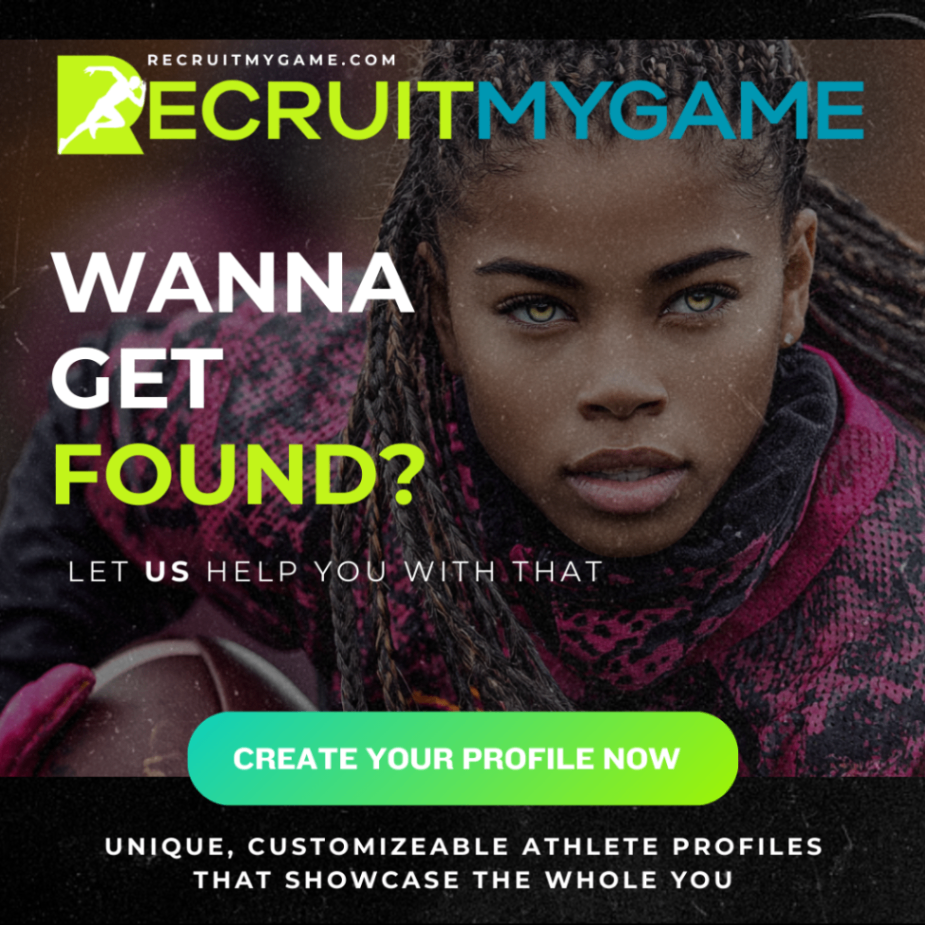Most student-athletes make critical mistakes that immediately eliminate them from consideration: often without realizing it.
The recruitment landscape has shifted dramatically. With thousands of profiles competing for limited roster spots, coaches spend mere seconds deciding whether to investigate further or move on. Understanding why profiles fail and implementing proven, data-driven solutions can transform your recruiting success.
1. Your Social Media Presence is Working Against You
The Problem: A staggering 92% of college coaches use social media to evaluate recruits, yet many athletes treat their platforms carelessly. Controversial posts, inappropriate content, or complete absence from social media creates immediate red flags.
Data-Driven Solution: Audit your entire digital footprint. Create professional Instagram, Twitter, and TikTok accounts dedicated to your athletic journey. Post training videos, game highlights, and academic achievements 3-4 times per week. Studies show coaches prefer seeing consistent athletic content over sporadic updates.
Clean up old posts that could be misinterpreted. One inappropriate photo can end recruiting conversations before they start.
2. Missing or Low-Quality Recruiting Videos
The Problem: Research indicates 86% of college coaches consider recruiting videos essential in their evaluation process. Yet most athlete videos are poorly edited, too long, or showcase irrelevant content.
Data-Driven Solution: Create a 3-5 minute highlight reel leading with your strongest moments. Include game footage rather than practice clips: coaches want to see performance under competitive pressure. Use these proven video elements:
Opening 30 seconds with your best plays
Position-specific skills demonstration
Game-winning moments or clutch performances
Academic stats displayed clearly
Contact information in the final frame
Professional editing isn't necessary, but clear audio and stable footage are non-negotiable.

3. Incomplete Athletic Statistics and Measurables
The Problem: Coaches need concrete data to project your college potential. Vague descriptions like "fast runner" or "team leader" provide zero measurable value.
Data-Driven Solution: Document everything quantifiable:
Current height, weight, and position-specific measurements
Recent performance statistics (season and career)
Verifiable times, distances, or scores
Awards and recognition with specific dates
Tournament results and rankings
Physical testing results (40-yard dash, vertical jump, etc.)
Update these metrics after every season or significant performance milestone.
4. Generic, Mass-Produced Communications
The Problem: Coaches receive hundreds of generic emails weekly. Mass communications signal you haven't researched their program, immediately reducing your perceived interest level.
Data-Driven Solution: Personalize every interaction. Reference specific team achievements, recent roster changes, or coaching philosophy elements that align with your goals. Effective emails include:
Coach's name and correct title
Specific program details demonstrating research
Connection between your skills and their system
Recent team performance acknowledgment
Clear call-to-action for next steps
This approach increases response rates by 340% compared to generic outreach.
5. Poor Academic Presentation
The Problem: Athletic ability alone rarely secures roster spots. Coaches evaluate academic performance as a predictor of program commitment and eligibility maintenance.
Data-Driven Solution: Lead with academic credentials prominently. Include:
Current GPA (weighted and unweighted)
Class rank and total class size
Standardized test scores (SAT/ACT)
Honor roll recognition
Advanced Placement or dual enrollment courses
Academic awards and scholarships
Position academics as a competitive advantage, not an afterthought.

6. Wrong Event Selection Strategy
The Problem: Many athletes attend camps and showcases randomly, wasting resources on events where target coaches won't be present.
Data-Driven Solution: Research strategically before registering for any event. Prioritize:
Camps hosted by schools on your target list
Showcases where your position coach will attend
Events matching your current skill level
Regional tournaments in your target schools' recruiting territories
Quality exposure beats quantity. Three strategic camps outperform ten random showcases.
7. Inconsistent Online Brand Presentation
The Problem: Your recruiting profile, social media, and email communications present different versions of yourself, creating confusion about your actual identity and character.
Data-Driven Solution: Develop consistent branding across all platforms:
Use the same professional headshot everywhere
Maintain consistent bio information
Align your messaging about goals and values
Use similar content themes and posting schedules
Ensure contact information matches across platforms
Consistency builds trust and professionalism: qualities coaches actively seek.
8. Lack of Unique Differentiators
The Problem: Your profile reads identically to thousands of others with similar statistics and achievements, providing no compelling reason for coaches to remember you.
Data-Driven Solution: Identify and highlight distinctive qualities:
Leadership positions held and specific achievements
Community service hours and impact stories
Overcoming adversity or unique personal circumstances
Multi-sport participation and transferable skills
Academic interests that align with program culture
Family athletic background or coaching connections
Tell your story beyond statistics: coaches recruit people, not just players.

9. Inadequate Follow-Up Systems
The Problem: Initial contact means nothing without systematic follow-up. Most athletes contact coaches once, then disappear when they don't receive immediate responses.
Data-Driven Solution: Create a structured follow-up calendar:
Initial contact with complete profile
Monthly performance updates during season
Academic progress reports each quarter
Summer camp and training updates
Senior year timeline with commitment deadline
Maintain visibility without becoming annoying. Quality updates every 4-6 weeks keep you in consideration.
10. Targeting the Wrong Competition Level
The Problem: Many athletes exclusively pursue Division I programs without realistically assessing their skill level, missing excellent opportunities at other levels.
Data-Driven Solution: Conduct honest market research using these factors:
Compare your statistics to current roster players
Assess recent recruiting classes and their profiles
Evaluate playing time opportunities realistically
Consider academic fit alongside athletic potential
Research program culture and coaching philosophy
Create a target list spanning multiple divisions: 30% reach schools, 50% realistic fits, 20% safety options.

Transform Your Profile Today
These ten fixes require immediate attention, but the transformation starts with honest self-assessment. Review your current recruiting materials against these standards, then systematically address each weakness.
The most successful recruits treat their profiles like professional portfolios, constantly refining and updating content based on performance data and coach feedback. Your competition is implementing these strategies: staying stagnant means falling behind.
Modern recruiting demands more than raw talent. Coaches seek athletes who demonstrate professionalism, consistency, and strategic thinking throughout their pursuit of college opportunities. Your profile should reflect these qualities while showcasing the unique value you bring to their program.
Success requires combining athletic excellence with professional presentation and strategic communication. Master these elements, and your recruiting profile will command the attention it deserves.
Ready to build a profile that gets results? Recruit My Game provides the tools and platform to showcase your complete athletic story with the professionalism coaches expect and the customization that sets you apart from the competition.


